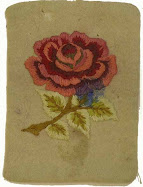 Staring back at me from another time sit seventeen young men, most in shorts and rugger tops, one in overcoat and trilby, they are the Bromsgrove RFC from the season 1913-14. Sitting in the centre of the front row is Bill Jones, the original owner of the photograph. I was lucky enough to become the new owner of this photograph and another from the 1912-13 season of the same team earlier in the week.
Staring back at me from another time sit seventeen young men, most in shorts and rugger tops, one in overcoat and trilby, they are the Bromsgrove RFC from the season 1913-14. Sitting in the centre of the front row is Bill Jones, the original owner of the photograph. I was lucky enough to become the new owner of this photograph and another from the 1912-13 season of the same team earlier in the week. One cannot help but think what each one of these chaps went through in the ensuing years. According to the seller, Bill Jones went into the Royal Flying Corps during the war and remained in the RAF, somewhere along the line being awarded an OBE for his efforts. But what became of the others?
Fortunately, below the photograph, in the former owner’s handwriting, are the names of each player. Unfortunately, they are only the surnames. This, of course, makes tracing them that little bit more difficult, particularly with names like Smith and Evans to contend with. I am hoping that Bromsgrove RFC will be able to help out a little with either initials or full names for each of the chaps pictured. Time will tell, but I shall persevere nonetheless.
I wonder how many of the men in this photo played their last season of rugby that year? How many fell? How many were wounded? And how many just never returned to the sport? It is all conjecture on my part as to the respective lives of each of these individuals, but I am sure that I will uncover some stories. I will report on my findings and try to bring life back into this sepia toned image taken before that last golden summer had begun.
